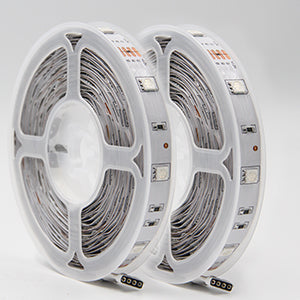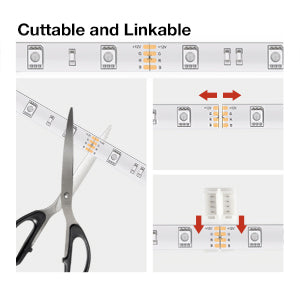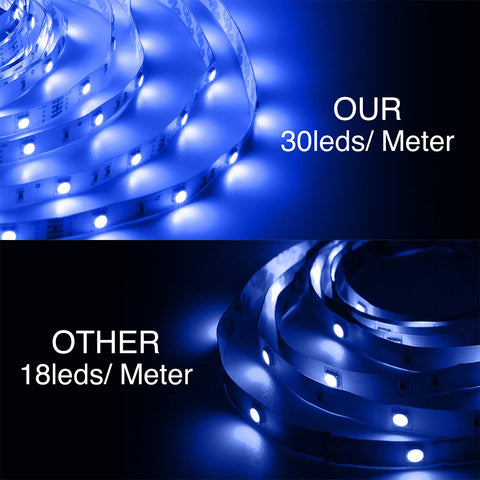What is LED strip lights?
Everything you need to know about your LED light strip before buy it.
An LED strip light is a flexible circuit board that is populated with LEDs that you can stick almost anywhere you want to add powerful lighting in a variety of colors and brightnesses.LED Strip light is very popular because of the varying IP range from IP20 to IP68 for both interior and exterior decorative projects. It can be used for underwater lighting because of ease of installation and is also suitable for projects such as cove lighting or under furniture or kitchen cabinets because the strip can be concealed.

LED strip lights are new and versatile forms of lighting. There are many variants and exceptions, but for the most part, they have the following characteristics:
Consist of many individual LED emitters mounted on a narrow, flexible circuitboard.
Operate on low-voltage DC power.
Are available in a wide range of fixed and variable color and brightness.
Ship in a long reel (typically 16 feet / 5 meters), can be cut to length, and includes double-sided adhesive for mounting.

An LED strip light is typically half an inch (10-12 mm) in width, and up to 16 feet (5 meters) or more in length. They can be cut to specific lengths using just a pair of scissors along the cutlines, located every 1-2 inches.

Individual LEDs are mounted along the strip, typically at densities of 18-36 LEDs per foot (60-120 per meter). The light color and quality of the individual LEDs determine the overall light color and quality of the LED strip.
The backside of the LED strip includes pre-applied double-sided adhesive. Simply peel off the liner, and mount the LED strip to virtually any surface. Because the circuitboard is designed to be flexible, LED strips can be mounted on curved and uneven surfaces.

You may come across various LED emitter names such as 2835, 3528, 5050 or 5730. Do not worry too much about this, as what is most important in an LED strip is the number of LEDs per foot, and the power draw per foot.
LED density is important in determining the distance between LEDs (pitch) and whether or not there will be visible hotspots and dark spots between the LED emitters. A higher density of 30 LEDs per foot will typically provide the best, most evenly distributed lighting effect. LED emitters are the most expensive component of LED strip manufacturing, so be sure to account for LED density differences when comparing LED strip prices.
Sometimes, you might need a punchy, saturated color effect. For these situations, colored LED strips can offer great accent and theatrical lighting effects. Colors across the entire visible spectrum are available - violet, blue, green, amber, red - and even ultraviolet or infrared.
There are two primary types of colored LED strip: fixed single color, and color changing. A fixed color LED strip emits just one color, and the operating principle is just like the white LED strips we discussed above. A color-changing LED strip consists of multiple color channels on a single LED strip. The most basic type will include red, green and blue channels (RGB), allowing you to dynamically mix the various color components on the fly to achieve virtually any color.








